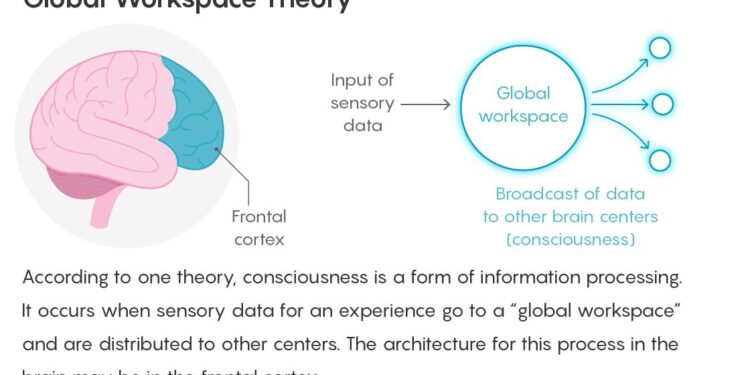In the ever-evolving field of psychology, understanding consciousness remains one of the most compelling challenges. As scientists and theorists strive to unravel the mysteries of human awareness, several prominent theories have emerged, each offering unique insights into the nature of conscious experience. In this article, we explore three leading theories of consciousness, examining their foundations, implications, and the debates they spark within the scientific community. Join us as we delve into the depths of the mind and shed light on what it truly means to be conscious.
Understanding the Foundations of Consciousness Theories
At the heart of the quest to unravel consciousness lie varying schools of thought, each offering distinct frameworks on how subjective experience emerges. The biological perspective emphasizes the brain’s neural networks, proposing that consciousness arises from complex interactions between neurons and synaptic activities. Meanwhile, the philosophical standpoint debates the intrinsic nature of consciousness, focusing on qualia- the individual instances of subjective, conscious experience. These divergent views underscore the complexity of defining consciousness strictly through physical or metaphysical terms.
Several key theories dominate the landscape, often overlapping yet distinctly interpreting the phenomenon:
- Global Workspace Theory: Suggests that consciousness results from information being broadcasted across various brain regions, enabling unified experience and decision-making.
- Integrated Information Theory: Proposes that consciousness corresponds to a system’s capacity to integrate information, measured by a value known as phi.
- Higher-Order Theories: Argue that conscious experience depends on a mental state’s ability to represent itself to higher-order cognitive systems.
| Theory | Core Idea | Primary Focus |
|---|---|---|
| Global Workspace | Information broadcast | Neural communication |
| Integrated Information | Degree of info integration | Quantitative measurement |
| Higher-Order | Self-representation | Cognitive reflection |
Analyzing Key Differences and Scientific Evidence
Among the three prominent theories-the Global Workspace Theory, Integrated Information Theory, and Higher-Order Thought Theory-their fundamental distinctions lie in how they conceptualize the origin and nature of conscious experience. Global Workspace Theory emphasizes a centralized “workspace” where information becomes globally accessible to various cognitive processes, suggesting consciousness arises from widespread neural broadcasting. In contrast, Integrated Information Theory quantifies consciousness based on the system’s ability to integrate information, proposing that the level of consciousness corresponds directly to the quantity and quality of integrated information (phi). Meanwhile, Higher-Order Thought Theory centers on self-reflective mental states, positing that consciousness depends on our ability to have thoughts about our own mental processes.
Scientific evidence supporting these models varies notably in its focus and methodology. Neuroimaging studies often bolster Global Workspace Theory by demonstrating widespread cortical activation during conscious states, while experimental paradigms involving the quantification of informational complexity lend credence to Integrated Information Theory. Behavioral and electrophysiological data highlighting meta-cognition and self-awareness tend to favor the Higher-Order Thought framework. Below is a concise comparison of key differences and supportive evidence aligned with each theory, summarizing their core propositions and empirical grounding:
| Theory | Core Proposition | Primary Evidence | Key Brain Focus |
|---|---|---|---|
| Global Workspace | Consciousness arises from global neural broadcasting. | FMRI showing widespread cortical activity. | Prefrontal and parietal cortices |
| Integrated Information | Level of consciousness equals integrated information (phi). | Quantitative metrics of neural connectivity. | Complex cortical networks |
| Higher-Order Thought | Consciousness depends on meta-cognitive self-representation. | Electrophysiological markers of self-awareness. | Prefrontal cortex |
- Distinct neural mechanisms: Each proposes unique circuits responsible for consciousness.
- Varied focus on subjective experience: Some prioritize global accessibility, others integration or meta-awareness.
- Methodological diversity: Evidence ranges from Behavioral studies to advanced neuroimaging and computational modeling.
Practical Implications for Mental Health and Cognitive Research
Understanding the nuances of consciousness theories offers a transformative lens through which mental health practitioners can tailor interventions. By integrating insights from these models, therapists can better comprehend phenomena like dissociation, hallucinations, and altered states, which often elude traditional diagnostic categories. This enriched perspective paves the way for innovative treatments – including mindfulness-based strategies that harness the observable interplay between attention, awareness, and cognitive processing.
- Enhanced diagnostic clarity: Differentiating between types of conscious experiences aids targeted therapy.
- Personalized care: Tailoring mental health approaches based on patients’ conscious states.
- Bridging cognitive gaps: Identifying disruptions in consciousness that correlate with cognitive impairments.
In cognitive research, applying these theoretical frameworks supports the design of experiments that quantify subjective experience alongside neural correlates. This dual focus accelerates understanding of how consciousness impacts learning, memory retention, and decision-making. Moreover, collaborative tables such as the one below help visualize contrasts between theories, facilitating interdisciplinary discussion and advancing research methodologies.
| Theory | Core Focus | Implications for Research |
|---|---|---|
| Global Workspace | Information broadcasting | Studying attentional networks |
| Integrated Information | Complex system integration | Measuring consciousness levels quantitatively |
| Higher-Order Thought | Meta-awareness | Exploring self-reflective cognition |
To Wrap It Up
As the quest to unravel the mysteries of consciousness continues, these three leading theories offer valuable frameworks for understanding the complexities of the human mind. While each perspective sheds light on different facets of conscious experience, none can yet claim a definitive answer. Ongoing research and interdisciplinary dialogue remain essential as psychologists and neuroscientists strive to explore the depths of awareness and perception. For readers seeking to grasp what it means to be truly conscious, these theories serve as a compelling starting point on a journey that is far from over.















![[News] China Makes Breakthrough in Chip Technology, Paving the Way for Lithography Advancements – TrendForce](https://earth-news.info/wp-content/uploads/2025/11/324664-news-china-makes-breakthrough-in-chip-technology-paving-the-way-for-lithography-advancements-trendforce-360x180.jpg)














